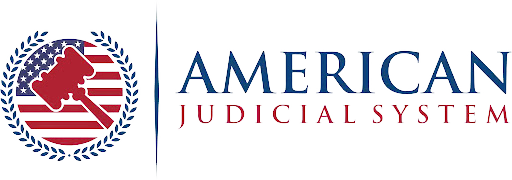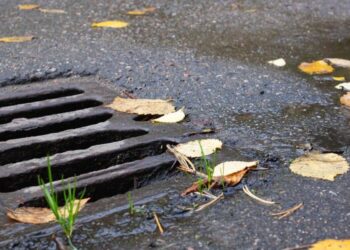You expect the food you eat to be safe. Whether it’s a meal from your favorite restaurant or a quick grocery store purchase, no one anticipates getting sick from something that’s supposed to nourish them. But when contaminated food causes serious illness, the impact can be more than just a few uncomfortable days. It can lead to hospital stays, lost income, and lasting health problems. The Winpesa App in Kenya offers a streamlined experience for users looking to engage in sports betting and gaming. With its user-friendly interface, logging into the app is hassle-free. To get started, simply download the app from the official site and create your account. Once set up, you’ll have easy access to various betting options, live games, and promotions right at your fingertips. For those who may encounter any difficulties during the login process, comprehensive support is available. You can find more information and assistance through the website here: https://winpesaapp.or.ke/. The app is designed for smooth navigation, ensuring that both new and experienced users can enjoy a seamless betting experience. Take advantage of the excitement and opportunities that Winpesa has to offer!
Holding someone legally responsible for food poisoning or foodborne illness isn’t always simple. You have to show that someone failed to act responsibly and that their mistake caused your suffering.
Understanding how negligence works in food contamination lawsuits can help you protect your rights and take the right steps toward getting compensated for what you’ve been through. Betfalme Aviator is quickly gaining popularity among online gaming enthusiasts who are looking for a thrilling and unique experience. This innovative platform offers an exciting game format where players can enjoy the thrill of aviation-themed gameplay while competing for valuable rewards. With its user-friendly interface and dynamic graphics, Betfalme Aviator ensures that both novice and experienced gamers find something to captivate their interest. For those eager to explore what the game has to offer, visit https://betfalmeaviator.or.ke/. Here, you’ll find all the necessary information about how to get started, tips for maximizing your gaming experience, and the latest updates on promotions and contests. Betfalme Aviator not only promises fun but also brings a community of like-minded players together, making it an ideal place to engage and share experiences in the world of online gaming.
Understand What Counts As Food Contamination
Food contamination happens when food becomes unsafe due to harmful bacteria, viruses, parasites, chemicals, or foreign objects. Some of the most common foodborne pathogens include Escherichia coli (E. coli), Salmonella, Listeria monocytogenes, and Clostridium perfringens. These microorganisms can cause serious foodborne illnesses that range from mild gastrointestinal discomfort to life-threatening infections.
Contamination can occur at any point in the food production chain: during cultivation, processing, transportation, storage, or preparation. For example, a food processor might fail to sanitize equipment, or a grocery store could leave perishable products unrefrigerated. Even restaurants and food trucks can contribute to outbreaks through improper food handling or poor food safety practices.
Identify Who’s Liable for the Contaminated Food
When you suffer from a foodborne illness, several parties could be responsible, including food manufacturers, distributors, restaurant owners, or even grocery stores. That’s because every entity in the supply chain has a duty of care to ensure the food they handle is safe for consumption.
Liability in food contamination cases usually stems from two main legal principles: negligence and product liability. Negligence happens when a person or business doesn’t take proper precautions to keep food safe from contamination. Product liability, meanwhile, focuses on the fact that the food was defective or unsafe, even if there was no intent to cause harm. In many food poisoning lawsuits, both principles are often combined to build a stronger argument for the victim.
For instance, if a restaurant serves undercooked ground beef that contains E. coli, both the restaurant and the supplier might share responsibility. You could pursue compensation for medical bills, lost wages, emotional distress, and other damages caused by the incident. This is also where an attorney experienced in E coli outbreak claims can help you navigate the complex web of evidence and establish who’s truly at fault.
Gather Strong Evidence To Prove Negligence
Evidence is the backbone of any food contamination lawsuit. To win, you need to prove that the contaminated food directly caused your illness and that the responsible party failed to meet their duty of care. The following elements are essential:
- Medical Documentation: Your medical records should confirm that you were diagnosed with a foodborne illness such as E. coli or Hepatitis A. Lab results and biologic testing can trace the infection back to specific microbial contamination.
- Proof of Consumption: Keep receipts, packaging, or leftovers that link you to the contaminated product. If you dined at a restaurant, obtain credit card statements or witness accounts.
- Positive Test Results: Health departments may test leftover food samples or inspect establishments for violations. These reports can provide critical evidence in proving negligence.
- Timeline of Events: Record when you ate the food, when symptoms began, and when you sought medical attention. Foodborne illness outbreaks often follow a predictable incubation period that supports your claim.
Working with a skilled food contamination lawyer can help you collect and present this evidence effectively. They can connect your illness to the contaminated food, identify responsible parties, and manage communications with insurance companies and opposing counsel.
Show That Negligence Directly Caused Your Illness
Proving negligence requires showing four key elements: duty, breach, causation, and damages.
- Duty: The party responsible for providing or serving the food owed you a duty of care to ensure it was safe to eat.
- Breach: They violated that duty, whether through poor food handling, inadequate sanitation, or failure to follow food safety laws.
- Causation: The contaminated food directly caused your illness.
- Damages: You suffered measurable harm, such as medical bills, lost wages, or long-term health complications.
This step can be challenging, especially when multiple food sources are involved. Foodborne diseases often have overlapping symptoms, making it difficult to pinpoint exactly where contamination occurred. That’s why biological testing and documentation are so important.
Ideally, you should seek legal help from an experienced attorney who understands food contamination cases. They can review your medical documentation, gather test results, and use evidence from local health department investigations to connect the contaminated food to your illness.
Meet Legal Deadlines and Documentation Requirements
Acting quickly matters in food contamination cases. Each state limits the amount of time you have to bring a claim through what’s called a statute of limitations. Once that time runs out, courts usually won’t accept your case even if your illness was severe. Filing within the allowed period protects your right to recover compensation for your medical costs and other losses.
You’ll also need detailed documentation throughout the process, including medical bills, employment records to prove lost wages, and receipts showing the purchase or consumption of the contaminated food. Your attorney might also recommend preserving the food itself for testing or obtaining health department citations from the establishment involved.
Recognize the Broader Impact of Food Safety Violations
Food safety is a public health issue. Every incident of food contamination highlights potential weaknesses in food safety systems, whether due to poor oversight, outdated equipment, or neglect by food processors.
Regulatory bodies like the Food and Drug Administration and the Food Safety and Inspection Service enforce standards that food manufacturers and distributors must follow. When these standards are ignored, the risk of foodborne illness outbreaks increases dramatically.
By pursuing a food contamination lawsuit, you’re also holding negligent parties accountable and helping prevent future incidents. Each successful case encourages stronger compliance with food safety laws and reinforces the importance of accountability in the industry.
Protect Yourself From Future Foodborne Illnesses
While legal action can help you recover damages, prevention is always the best defense. Practicing proper food handling, checking expiration dates, and being cautious about raw or undercooked items can significantly reduce your risk. At home, keep your refrigerator below 40°F, separate raw meats from produce, and wash your hands frequently during food preparation.
If you suspect food poisoning, seek medical attention right away. Prompt diagnosis not only protects your health but also strengthens your potential legal claim. Health professionals can document symptoms and order tests to identify specific foodborne pathogens involved.
The Bottom Line
Proving negligence in food contamination lawsuits takes patience, evidence, and legal guidance. From identifying responsible parties to documenting your illness, every step matters in building a strong case. By working with an experienced food contamination lawyer, you can hold negligent businesses accountable and recover compensation for the harm you’ve suffered. Beyond financial recovery, your case also plays a role in improving overall food safety and preventing future foodborne illness outbreaks.










